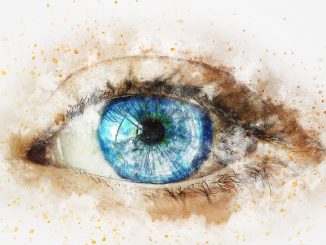
In work published earlier this year, a team of scientists from China and the U.S. reported that they’d given mice the ability to see in the dark for up to 10 weeks through a simple injection of a special type of nanomaterial – called upconversion nanoparticles (UCNPs) – into the animals’ eyeballs.
Researchers tested their erbium-ytterbium photoreceptor-binding nanoparticles technique that converts infrared light to visible light by conducting several physiological and behavioral tests, including one where they placed the injected mice in a water maze along with mice who didn’t receive the injections. UCNPs injected mice were able to find their way out of the maze in the dark, the researchers said, noting that the technique had given animals the ability “to develop infrared vision without compromising their normal vision and associated behavioral responses.”
In their study, which was published in the journal Cell, the international team of scientists led by Xue Tian, a vision physiology expert at the University of Science and Technology of China in Hefei, and Gang Han, a nanoparticle expert at the University of Massachusetts Medical School in Worcester, also said that the study’s findings could serve as the basis for human “super vision”.
In fact, according to Sciencemag, Xue Tian stated that given the similarities between mice and humans in vision physiology, he “definitely” thought the technique of using nanoparticles to convert low-energy photons from near-infrared light to visible light – a method that had negligible side effects on mice – would work in humans, too.
If the same built-in night vision technique works in humans, future versions of UCNPs could lead to a better understanding of visual perception and possibly new ways to treat color blindness. The near-infrared vision (NIR) technology could also have important medical applications, such as the development of new therapeutic strategies in age-related macular degeneration, the leading cause of irreversible vision loss in people worldwide.
“We’re actually looking at how to use NIR light to release a drug from the UNCPs specifically at the photoreceptors (cells in the retina that respond to light),” Han was quoted as saying late last month.
Another possibility of the technique’s use is that of offering military personnel temporarily enhanced night vision without the need for goggles. Han expanded on that potential, saying, “When we look at the universe, we see only visible light. But if we had near-infrared vision, we could see the universe in a whole new way. We might be able to do infrared astronomy with the naked eye, or have night vision without bulky equipment.”
The team said they are moving ahead with their research. They plan to test next their UCNPs method in bigger animals, possibly man’s best friend.
Reference: Sciencedaily
Disclaimer: This page contains affiliate links. If you choose to make a purchase after clicking a link, we may receive a commission at no additional cost to you. Thank you for your support!




Leave a Reply